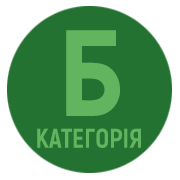HYDROCHEMICAL COMPOSITION OF NATURAL SPRINGS IN THE CITY OF SUMY AND THE VILLAGE OF STEPANIVKA
DOI:
https://doi.org/10.32782/naturalspu/2024.2.12Keywords:
hydrochemical composition, quantitative analysis, drinking water quality monitoring, drinking water, natural sources, chemical pollution.Abstract
The article presents the results of the study of the hydrochemical composition of natural springs in the city of Sumy and the village of Stepanivka, as well as a comparative analysis of the received data with current sanitary and hygienic standards. The relevance of the conducted research lies in the fact that the growing anthropogenic load on the environment, climate change and other factors lead to the deterioration of the quality of water resources. This process, in turn, leads to the appearance of significant risks for the health of living organisms, and also increases the imbalance in the environment in general. Considering the mentioned ecological problems, the study of the quality of water resources is extremely important. One of the main groups of drinking water pollutants are inorganic compounds (nitrates, nitrites, sulfates, chlorides, fluorides, heavy metal ions, etc.). Their excessive accumulation in water can lead to the development of various diseases and negatively affect the health of the population. We have analyzed a number of important indicators of the hydrochemical composition of natural springs in the city of Sumy and the village of Stepanivka In 2023, the hydrogen index (pH) and the content of the following ions were determined: nitrites (NO2 -), nitrates (NO3 -), fluorides (F-), chlorides (Cl-), sulfates (SO4 2-). In 2024, in addition to the above indicators, the content of ammonium ion (NH4 +), polyphosphates (according to PO4 3-), and heavy metals (copper, zinc, and ferrum) was determined. Based on the results of the research, we found an excess of permissible concentrations of nitrates and an increased content of fluorides. These pollutants can cause serious illness. Accordingly, the use of this water, especially for a long period of time, poses significant risks to the health of the population. The rest of the parameters that were determined were recorded in quantities that did not exceed the maximum permissible concentrations. In our opinion, the factors that led to the contamination of spring drinking water in the studied territories are effluents from communal and industrial facilities, as well as active human agricultural activity. The obtained results can be used to develop recommendations for the further use and protection of water resources of the studied territories.
References
Ангурець О., Хазан П., Колесникова К., Кущ М., Чернохова М., Гавранек М. Наслідки для довкілля війни росії проти України. Електронне науково-популярне видання. 2022. URL: http://surl.li/kgblr (дата звернення: 17.06.2024).
Верголяс М. Р. Оцінка токсичності нітратів у воді з використанням цитоморфологічних показників тест-організмів. Екологічні науки. 2020. 3 (30). C. 129–132.
Вплив хімічного складу та мікроелементів води питної на організм людини. Чернігівський обласний центр контролю та профілактики хвороб. 2022. URL: http://surl.li/smrsm (дата звернення: 19.08.2024).
Державні санітарні норми та правила «Гігієнічні вимоги до води питної, призначеної для споживання людиною» (ДСанПіН 2.2.4-171-10). К., 2010. URL: http://surl.li/hhckgt
Держводагентство: вплив війни на водні ресурси проникає в усі сектори економіки і вже давно перетнув національні кордони. URL: http://surl.li/ehvgzn
Зміна якісного стану води в р. Сейм. Державне агентство водних ресурсів України. Регіональний офіс водних ресурсів у Сумській області. UBL: http://surl.li/criikm
Карнаушенко Д., Вакал Ю. Зміна гематологічних показників крові під впливом техногенного забруднення. Наукові записки. Біологічні науки (Ніжинський державний університеті імені Миколи Гоголя). № 1-2, 2024. С. 52–64, doi:10.31654/2786-8478-2024-BN-1-2-52-64.
Мацак С., Вакал Ю., Касьяненко Г.Я. Дослідження явища міграції рухомих сполук флуору в ґрунтах прибережної зони р. Гуска. Український журнал природничих наук. № 3, 2023. С. 144–154 doi: 10.35433/naturaljournal.3.2023.144-154.
Мацак С.В., Вакал Ю.С. Аналіз питної води: оцінка якості та впливу хімічних забруднень. Матеріали міжнародної науково-практичної конференції «Екологія і раціональне природокористування: освіта, наука і практика». 15 листопада 2023 р., MANS w Łomży, Польща. 2023. pp. 145–149.
Мацак С.В., Вакал Ю.С. Вимірювання вмісту рухомих сполук Фосфору в ґрунтах на сільськогосподарських територіях вздовж р. Гуска. Актуальні проблеми дослідження довкілля: Матеріали Х Міжнародної наукової конференції (Суми-Тростянець, 25–27 травня 2023 р.,) Суми, 2023. С. 224–227.
Мацак С.В., Вакал Ю.С. Вплив сільськогосподарської діяльності на стан водних ресурсів. Матеріали VI Всеукраїнської студентської наукової конференції «Експериментальні та теоретичні дослідження в контексті сучасної науки». 21 червня 2024, м. Рівне. С. 154–155.
Мацак С.В., Вакал Ю.С. Неорганічні сполуки Нітрогену в природних водах та особливості їх визначення. Дев’яті Сумські наукові географічні читання: збірник матеріалів Всеукраїнської наукової конференції. 4–5 жовтня 2024 р., м. Суми. С. 80083.
Мацак С.В., Вакал Ю.С. Оцінка впливу військових дій на ґрунти та водойми Сумської області. Всеукраїнська науково-практична інтернет-конференція «Нові педагогічні виміри професійного розвитку майбутніх учителів: сучасні реалії та виклики» (15 листопада 2023 р.). м. Бердянськ, Україна. 2023
Про Основні засади (стратегію) державної екологічної політики України на період до 2030 року: Закон України №2697-VIII від 28.02.2019. URL: http://surl.li/akoef (дата звернення: 20.09.2024).
Реагування на надзвичайну подію на річках Сейм та Десна. Міністерство захисту довкілля та природних ресусрів України. Київ. 2024. URL: http://surl.li/iszhpe (дата звернення: 20.09.2024).
Регіональна доповідь про стан навколишнього природного середовища в Сумській області у 2023 році. Міністерство захисту довкілля та природних ресурсів України. 2023. URL: http://surl.li/hfgsf (дата звернення: 18.09.2024).
Римар З. І., Гордієнко О. А. Визначення показників фізіологічної повноцінності мінерального складу питної води. Науково-технічна конференція підрозділів ВНТУ. 2021. 2 с. URL: http://surl.li/ypapbo
Хільчевський В. К., Забокрицька М. Р. Хімічний аналіз та оцінка якості природних вод : навч. посіб. Луцьк : Вежа-Друк, 2021. 76 с.
Щорічний звіт про стан здоров’я населення України та епідемічну ситуацію за 2022 рік. Міністерство охорони здоров’я України. Київ. 2023. URL: http://surl.li/rebhj (дата звернення: 10.09.2024)
Fuge R. Fluorine in the environment, a review of its sources and geochemistry. Applied Geochemistry. 2019. 100. P. 393-406.
Miller J. D., Workman C. L. Panchang S. V., Sneegas G., Adams E. A., Young S. L., Thompson A. L. Drinking water nitrate and human health: an updated review. International journal of environmental research and public health. 2018. 15 (7). P. 1557.
Omer N. H. Water quality parameters. Water quality-science, assessments and policy. 2019. 18. P. 1–34.
World Health Organization. Guidelines for drinking-water quality: incorporating the first and second addenda. World Health Organization, 2022.
World Health Organization: Air quality, energy and health. 2018. URL: http://surl.li/xxewnd (дата звернення: 10.09.2024).
Yu Ya-qi,Yang Jin-yan. Health risk assessment of fluorine in fertilizers from a fluorine-contaminated region based on the oral bioaccessibility determined by Biomimetic Whole Digestion-Plasma in-vitro Method (BWDPM). Journal of hazardous materials. 2020. 383. 121124.







